
Rethinking
"Eating by Hands?"
“Eating by hands?”
I once made a photo picture book with such a title. That was about a quarter of a century ago, but thankfully, it is still in use today. The story has been published in elementary school textbooks, and the picture book continues to sell well. I guess it is partly because it is a story with an unusual angle.
To begin with, how did I come up with the idea of a picture book with such a title?
I was watching TV with my sons, who were in or just about to enter elementary school, and we were watching a TV show about a trip to India, and it was an eating scene. They were eating curry. And my son said, “What a mess! They are dirty. They are eating with hands.”
I said to my son, “No, no, no. That’s not true. This is …….”
I thought, this would be a great introduction to food culture, a sample of the differences between cultures. And that’s why I made it into a children’s book.



The act of eating itself is the fulfillment of an instinctive need. We eat because we are hungry. We eat because we need to eat to survive and grow.
However, when people do this, culture intervenes. What is considered as food?
For example, for Hindus in India, a cow is a sacred creature and not food. For Muslims, pigs are unclean creatures and not to be eaten.
The same is true for the Japanese until the Edo period, when cows and pigs were not to be eaten. Just looking at a steak dripping with blood is probably enough to make one’s tongue lick nowadays, but Japanese people around the time of the Meiji Restoration were almost disgusted by it …… So, when the ban on meat eating was lifted, it was not like eating chunks of meat, but rather dishes like curry and rice, where the pieces were hidden in a sauce flavored with spices (which seemed new, but were familiar Chinese medicine. Because turmeric is known as 鬱金, cinnamon is known as肉桂, and so on).
On the other hand, Japanese people would be happy to see fresh sashimi made from live fish, but some foreigners would find it weird to eat raw fish moving twitchingly. I have been said from foreigner like that. It is a mutual cultural difference.
So, the “eat or don’t eat” problem is endless. It is a cultural thing. And there are also many different ways to bring food to the mouth, as is the case in many cultures. First, Let’s think with a rough division.
The first of these is Eating-with-hands.
This is the theme here. Taking food by hands and bringing it to the mouth.
If we look back, all human beings were hand-eaters. Before hand-eating, there was what we might call oral eating, in which people directly touched and accepted food with their mouths, as many animals do, or as babies do when they receive food or breast milk from their mothers. This is how humans came to eat with their hands, as do many apes, or squirrels, otters, and other animals. This was probably a natural process, given the fact that we can walk on two legs and use our hands. Furthermore, we are creating various patterns, or rather, different ways of doing things.
However, even though we were all originally hand-eaters, this does not mean that they are still eating in the same way as they did in the past. There has probably been a transition. Detailed examples will be mentioned in plenty of other places throughout this project.
Among the examples I have seen, heard, and experienced, there is one in India, for example, where people eat with their right hand only, and their left hand is unclean (the hand used to wash one’s buttocks in the toilet). Or some that I have experienced in glutinous rice cultures, such as Laos in Southeast Asia, where there is less of such a commitment. The staple food is Khao Nyao, steamed glutinous rice, which is picked up from a woven bamboo container in a size just like nigiri sushi, and then put together in a sushi-like shape while taking a small portion with the other hand and eat it with a side dish. So there are cases where both hands are used to touch the food, and there are others where it is limited to the right hand only. And then there are various manners on it.
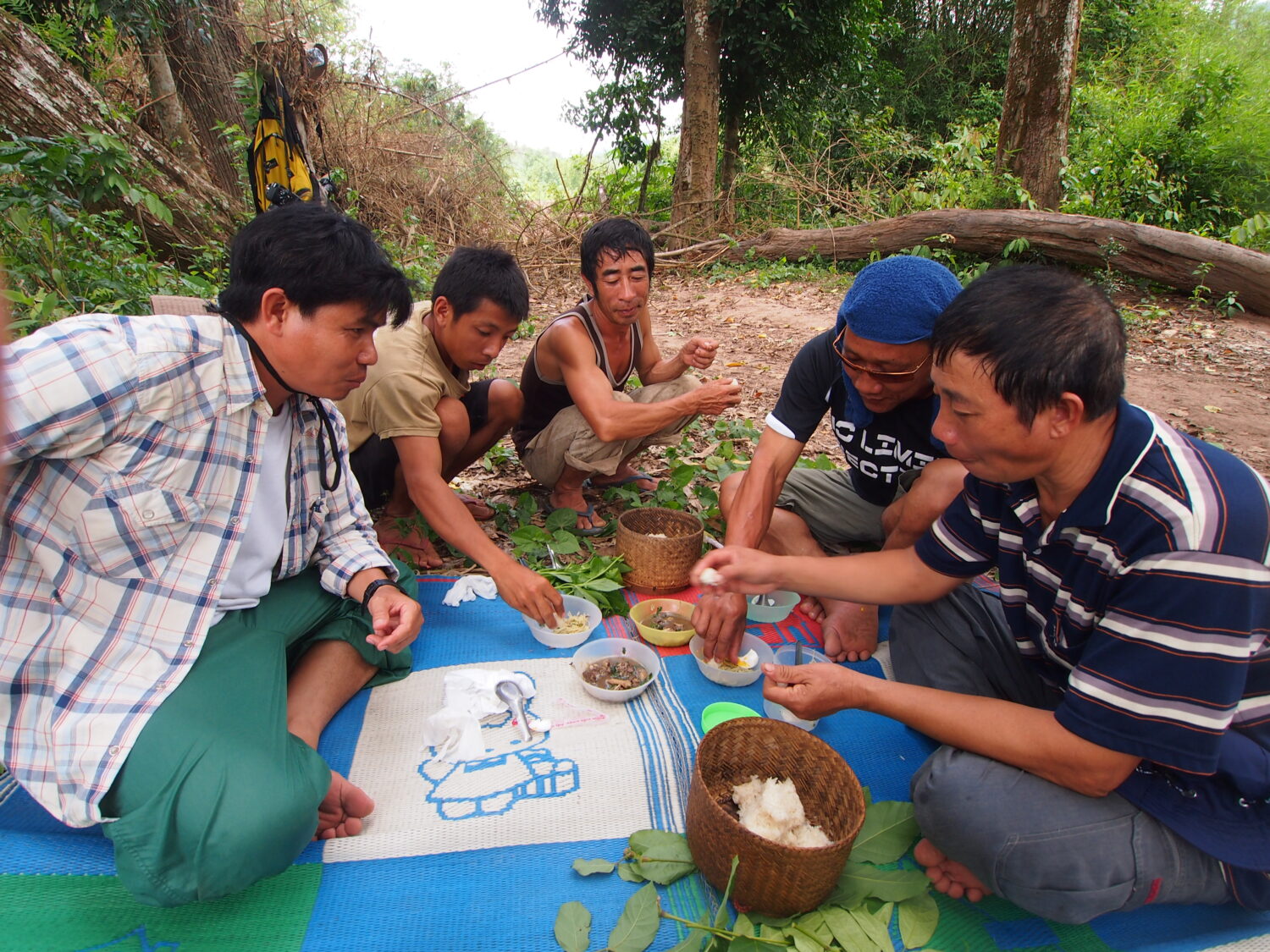
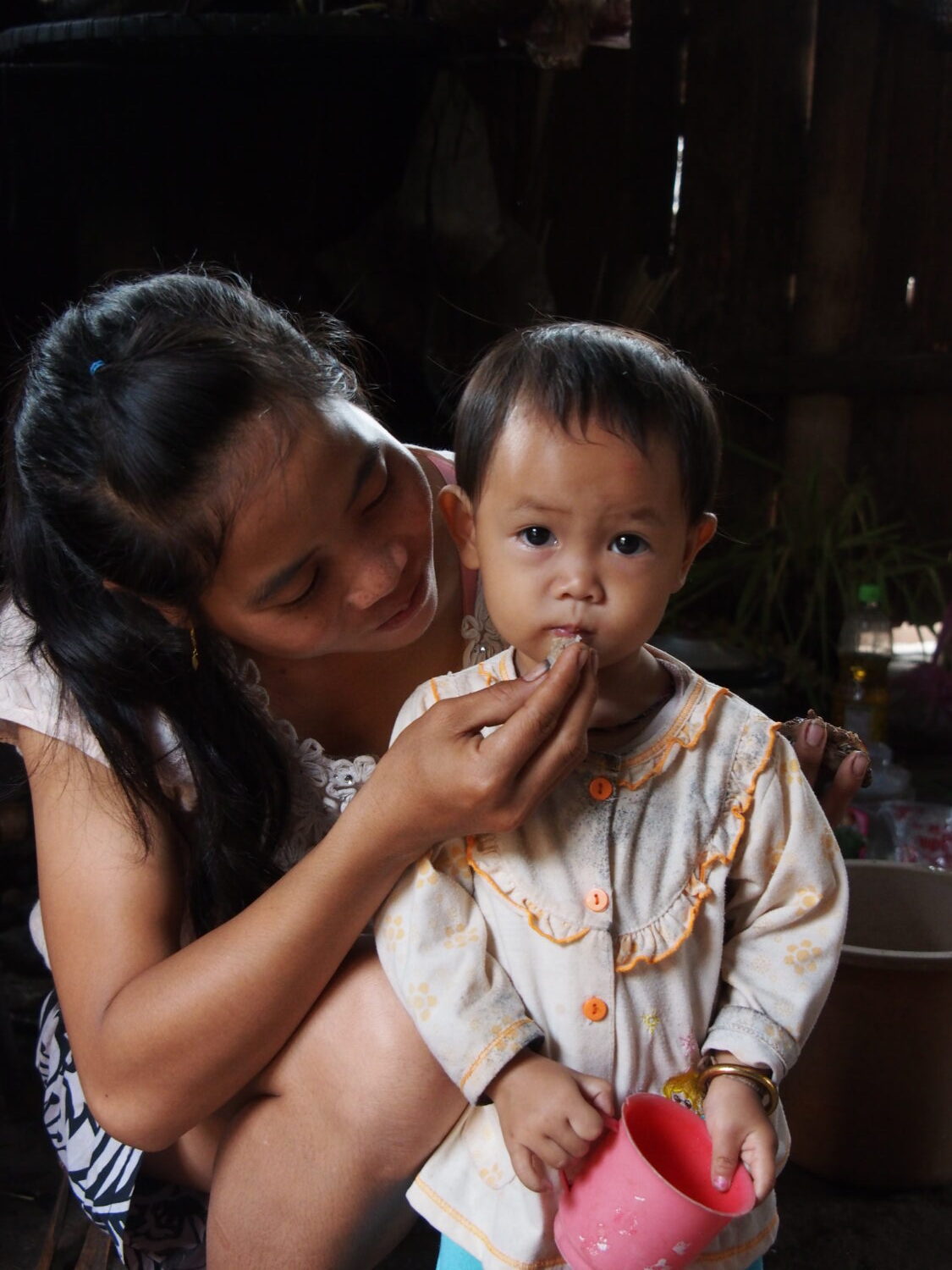
A derivative, or rather, an ongoing creation of this hand-eating culture is that of eating with a fork and spoon.
For example, in Thailand, a fork is held in one hand and a spoon in the other. Now, for instance, if it is something like a fried egg, you press down on it with the fork to stabilize it, and then cut it with the belly of the spoon. Then you push it into the spoon with the fork and into the mouth. Rice and curry are also eaten by that way. I remember finding a description of this in a book written by a Japanese resident in Thailand during the Meiji period (1868-1912), which is more than a hundred years ago. I am not sure what the reference was, but it seems that the men ate in this way, while the women ate by hand. The forks and spoons brought by the encounter with the West seemed to have taken root. Did those two only take hold because no dish required a knife?
I have been witnessing the younger generation eating that way in India for more than a decade now. Also in other Southeast Asian countries. In other words, could such a change be underway now?
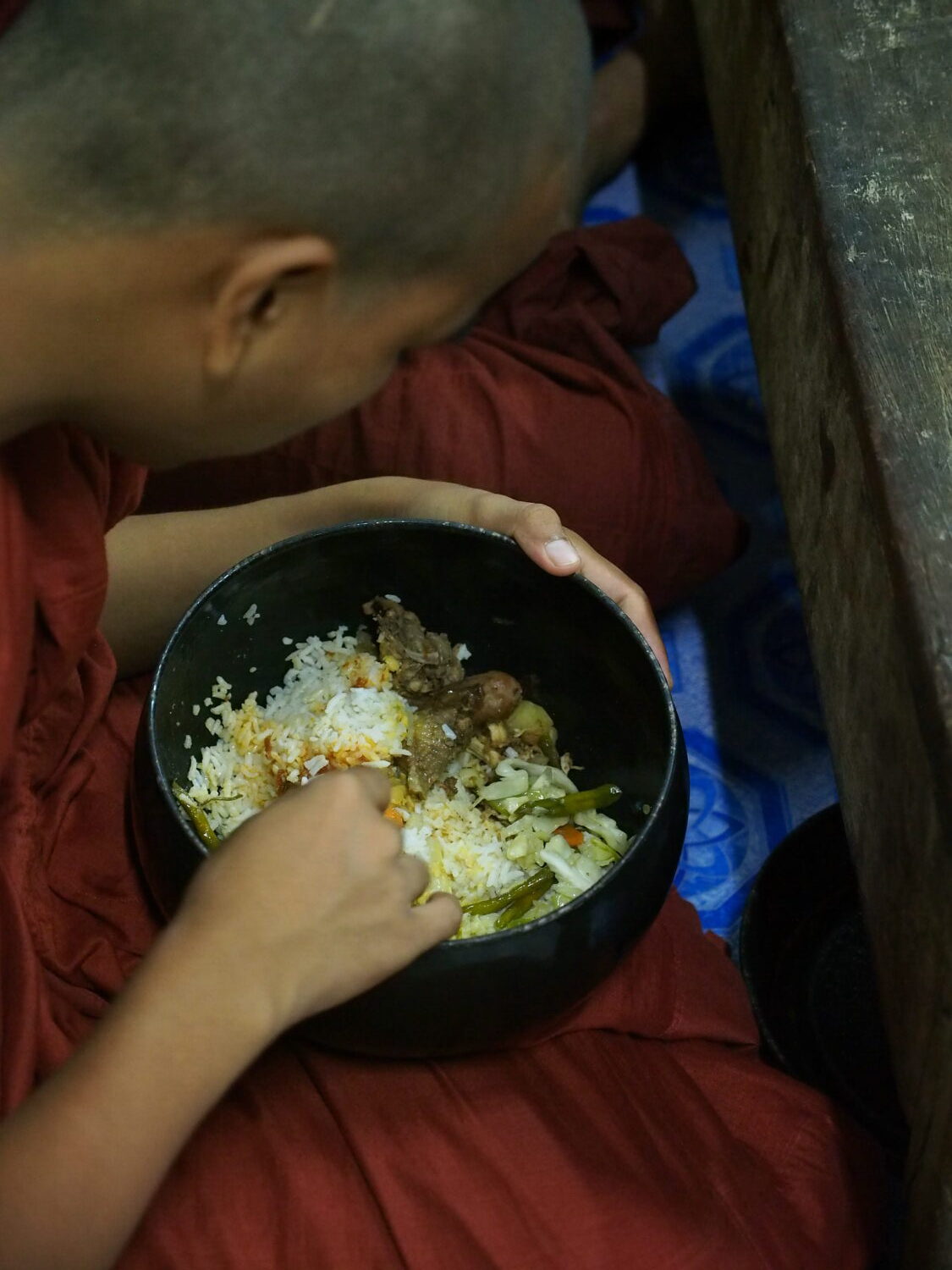

Along with eating with hands, another way of eating is to use chopsticks.
East Asia, centered on China, from the Korean Peninsula to Japan, and south to Vietnam (which was exceptionally Chinese cultural sphere = Kanji cultural sphere in Southeast Asia). In Mongolia, it is not basic, but in some cases it is. In Inner Mongolia, chopsticks were incorporated into each individual’s knife. So, it is a set of knife and chopsticks.
Even though they are from the same chopstick culture, there are quite a few differences. First of all, there are two types of chopstick culture: one is the Japanese style, in which the chopsticks belong to the individual, and other is the chopsticks do not belong to the individual but come as bundle. Japanese style is more special. Recently, I have seen some families in Japan where the chopsticks do not belong to individual. I have the impression that the number of such families is increasing, as I have heard during my food culture classes at university.
And the length of those chopsticks also varies. The length of chopsticks differs depending on the type of eating style, such as when people eat a large serving of food by stretching out their chopsticks and picking it up, or when they do not need to reach out their food because each person had a personalized dish on his or her own table. There are also differences of materials from metal to bamboo, wood, or ivory, etc.
Furthermore, there is also the difference of whether chopsticks alone or a spoon is included in the set. This reminds me that in Yunnan Province, China, where the Thai people live, they eat steamed glutinous rice, their staple food, with their hands while holding chopsticks in one hand and eating side dishes with it. Come to think of it, even in Japan, it is not uncommon for us to eat rice balls with one hand and chopsticks in the other ……, right?
Now, the history of chopsticks is as follows:
Since the excavation of two chopsticks as ritual vessels in Shang ruins, there have been many chopsticks excavated as Ming vessels, but since they are depicted in wall paintings during the Later Han period, it is thought that chopsticks for eating in China originated before the Former Han (around 2nd century BC) and spread rapidly after the Later Han (from the 1st to early 3rd century AD). (“Things and A Cultural History of Man 102 Chopsticks”, Mukai Yukiko, Hashimoto Keiko, Hosei University Press).
In Japan, according to the same book, “records and excavated artifacts suggest that it was several centuries later than in China,” but records are scarce. From various excavated artifacts, it is thought to have spread to the general public after the 7th century. However, unlike in the Korean Peninsula, where metal bowls were common, wooden bowls and containers that could be used for direct contact with the mouth became more common, and the spoon seems to have fallen out of use.
Now, the other major way of bringing food to the mouth: using a fork, knife and spoon.
Needless to say, these eating utensils are widely used in Europe and the countries built up by immigrants who originated from there, such as the United States and Australia. By the way, this is surprisingly new. For example, in “Comparison of Japanese and European Culture” by Luis Frois, who visited Japan in the Azuchi-Momoyama period, there is the following description.
We eat everything with our hands. The Japanese eat with two sticks, men and women, from childhood. (6-1)
This was written in 1585.
It is said that the first Europeans to use forks at the table were two princesses of the Byzantine Empire. This was in the 10th century. In the 11th century, it was passed on to Italy, and there are records of influential people in Venice eating with forks. However, the question would be how widespread it was, with the aforementioned description of Luis Frois.
It is said to have become common among the upper classes in the 16th century, or that a Medici daughter brought it with her when she married Henri II of France, but it took a long time to spread. It seems to have taken a long time to spread, since there are descriptions of eating-with-hand being the norm even in the 20th century in some places and at some levels of society. It was from the 19th to the beginning of the 20th century, or about a hundred and some ten years ago, that eating with a fork, knife, and spoon became the norm throughout Europe. So, it is a new common sense.
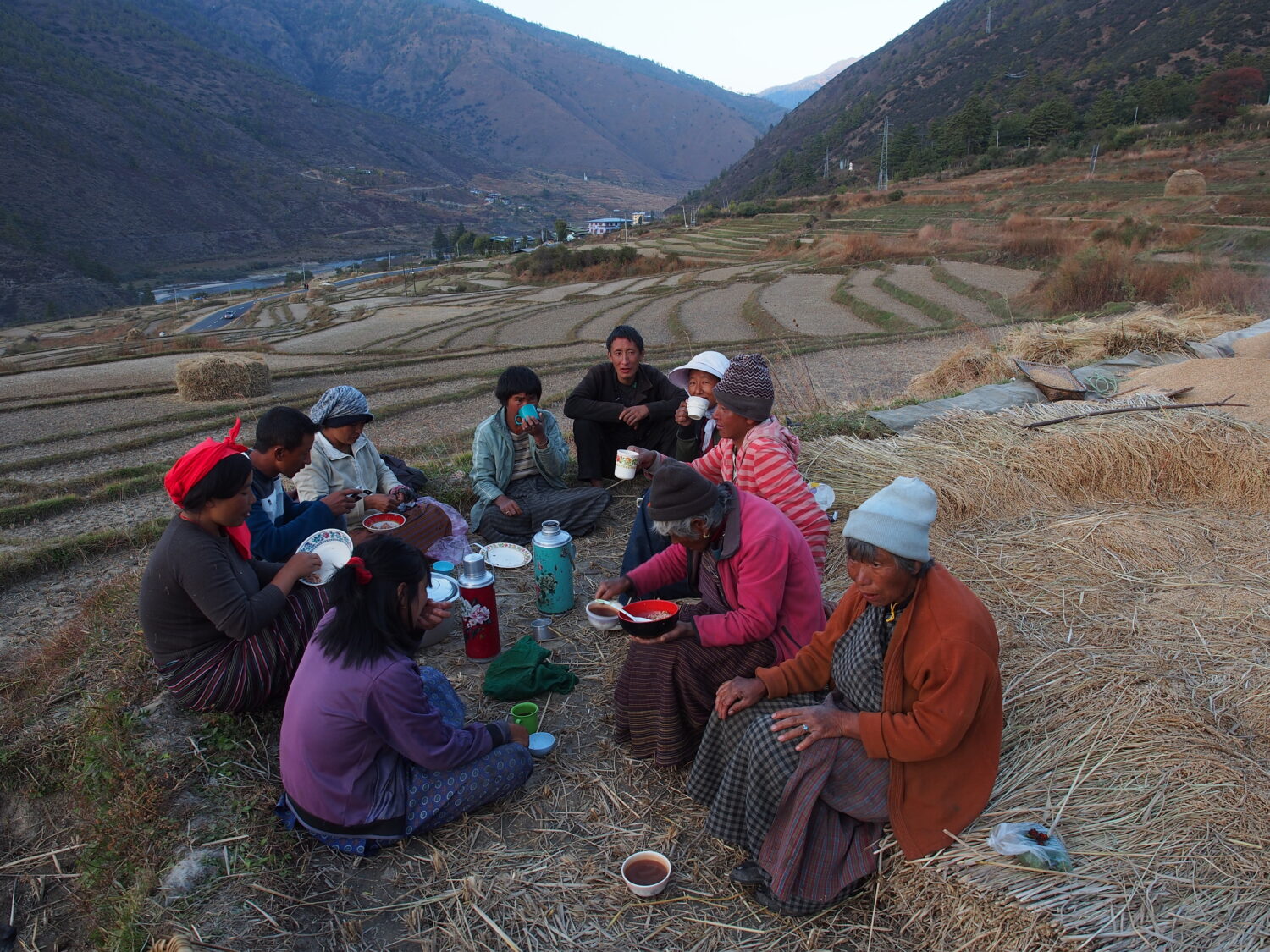
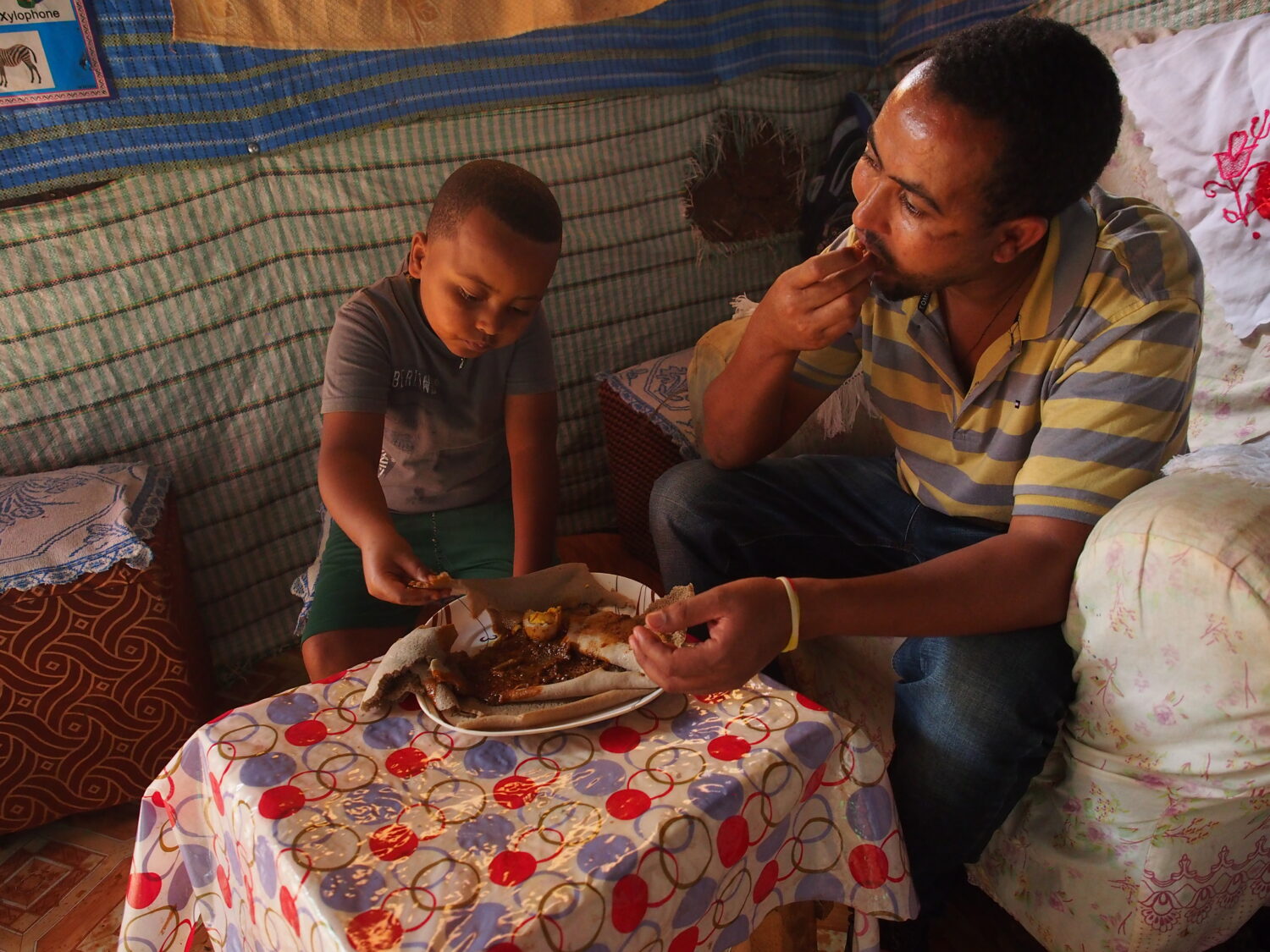
Well. So, these are the ways of eating and bringing food to the mouth. When I wrote the photo-picture book “Eating by Hands,” I mentioned eating-with-hands in this way.
Once upon a time, everyone ate with their hands, but there are places where people have started to use chopsticks and forks, does that mean that those places where people still eat with their hands are “outdated”?
No, that’s not true. When I learned from Indian cooking teacher Mira, there were various rules and manners for eating with hands.
And the teacher said, “You have to taste the food with your hands as well.” So, in some places, they “promoted” the use of chopsticks and forks, and in other places, they “promoted” the method of eating with hands in a tasty and clean way.
Since the creation of this picture book, I have traveled to many different places. In some places people ate with their hands, and in some another places people gradually changed to using forks and other tools. But basically, the thoughts I have written about here have not changed. Just as there is a sense of tasting food with the eyes, the warmth and softness of the food that touches the hands are tasted and enjoyed in the same way or as a preliminary step to tasting the food in the mouth. This is the culture of the people.
In addition to the above, I would like to touch on a few things that I have come to think and feel since then.
French anthropologist Claude Levistrauss has a theory called the “culinary triangle”. He says that a dish is formed by connecting three points: raw food, cooked food (put on fire), and rotten food (fermented food). It can be said to be a conflict between the artificial act of cooking (putting food on fire) and the natural transformation of rotting and fermenting. It might be said that this is a contrast between the natural act of eating with one’s hands and the human act of eating with chopsticks, forks, and other utensils.
For example, in the Japanese Shinto religion, there is a dish called “shinsen,” which is dedicated to the gods. It would be famous as “Houcho-shiki.” In short, even in the cooking process, the ingredients are not touched at all, but are held and picked up with chopsticks and cut with a knife. The fact that they do not touch the food with their hands is a symbol of the Hare in the concept of Hare and Ke. (‘Hare and Ke’ is a concept of time and space that describes a traditional view of the world. ‘Hare’ means special days and places used for celebratory events, and ‘Ke’ refers to ordinary everyday life).
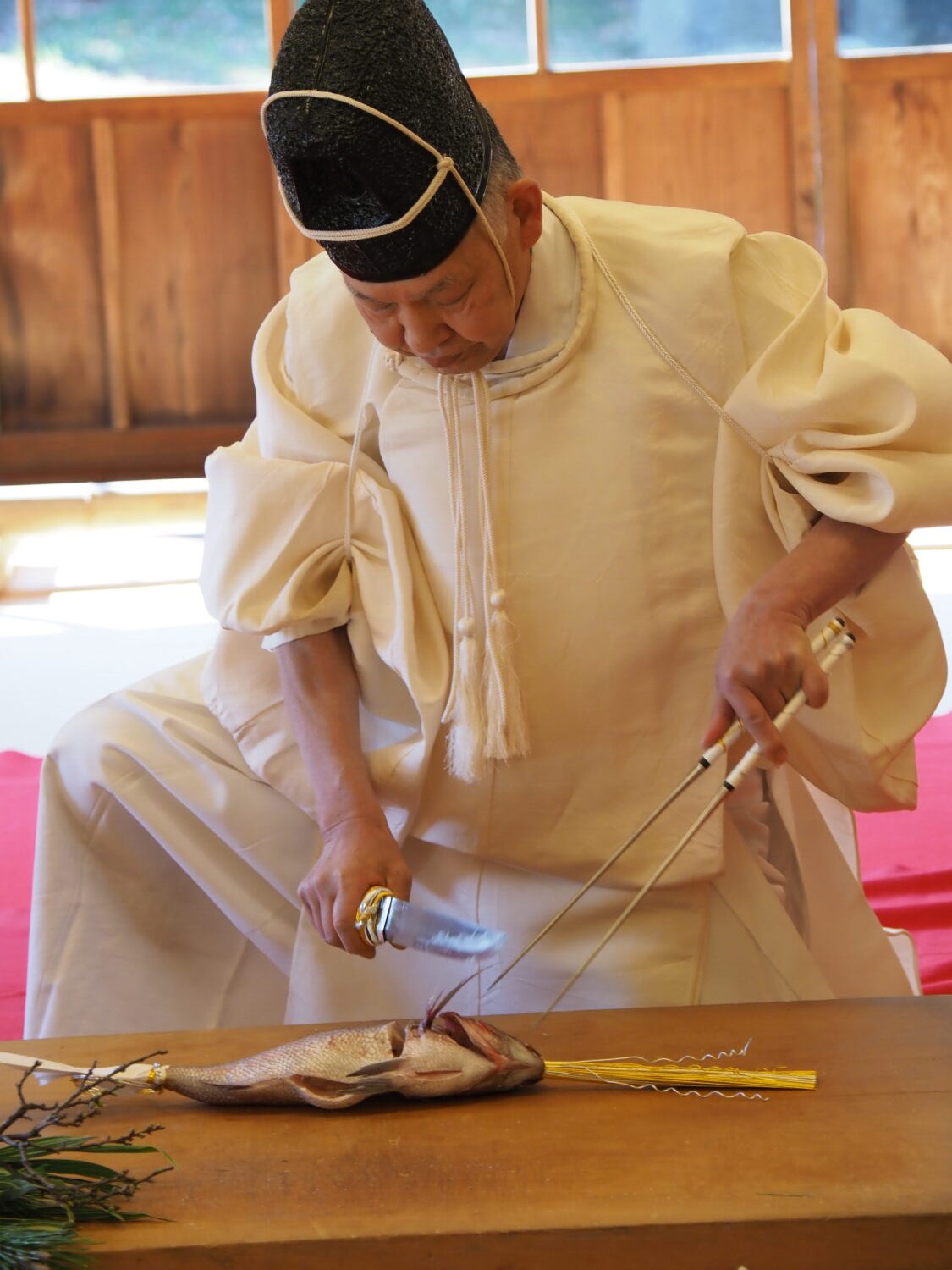
I realize that, yes, eating utensils, such as chopsticks, forks, knives, spoons, etc., are not only utensils for bringing food to the mouth, but also tools for cooking, right? Knives, for example, have been tools for cutting food since the time of stone knives in ancient times. The same is true of a spoon and the original form of a fork for skewering meat. At what stage of cooking and bringing the cooked food to the mouth do we use what kind of utensils? Has that axis perhaps shifted with the culture?
In fork-and-knife cultures, a piece of meat such as roast beef or roast chicken is presented directly on the table, and the host cuts it into pieces while everyone cheers and shouts with delight. In contrast, in cultures where chopsticks are used, the food is cut up in the kitchen into pieces that can be eaten with chopsticks, and then served in a form that is easy to pick up with chopsticks. In a sense, chopsticks are a universal tool that can be used to eat anything, but forks and knives are differentiated into knives for fish and knives for meat, depending on what is to be eaten.
In terms of the way of serving foods, is the culture of eating with hands similar to that of chopsticks? Is it common to cut the food into pieces that are easy to eat by hands?
Even in cultures that have moved in the direction of eating with utensils, there may be some aspects of nature that cannot be totally denied primitive way of eating and that are still preserved. This is what I am thinking about.
I would like to think about it again, slowly, picking up some sushi at the counter, or holding a Onigiri from the lunch box I brought into the great outdoors.
What is eating with our hands?
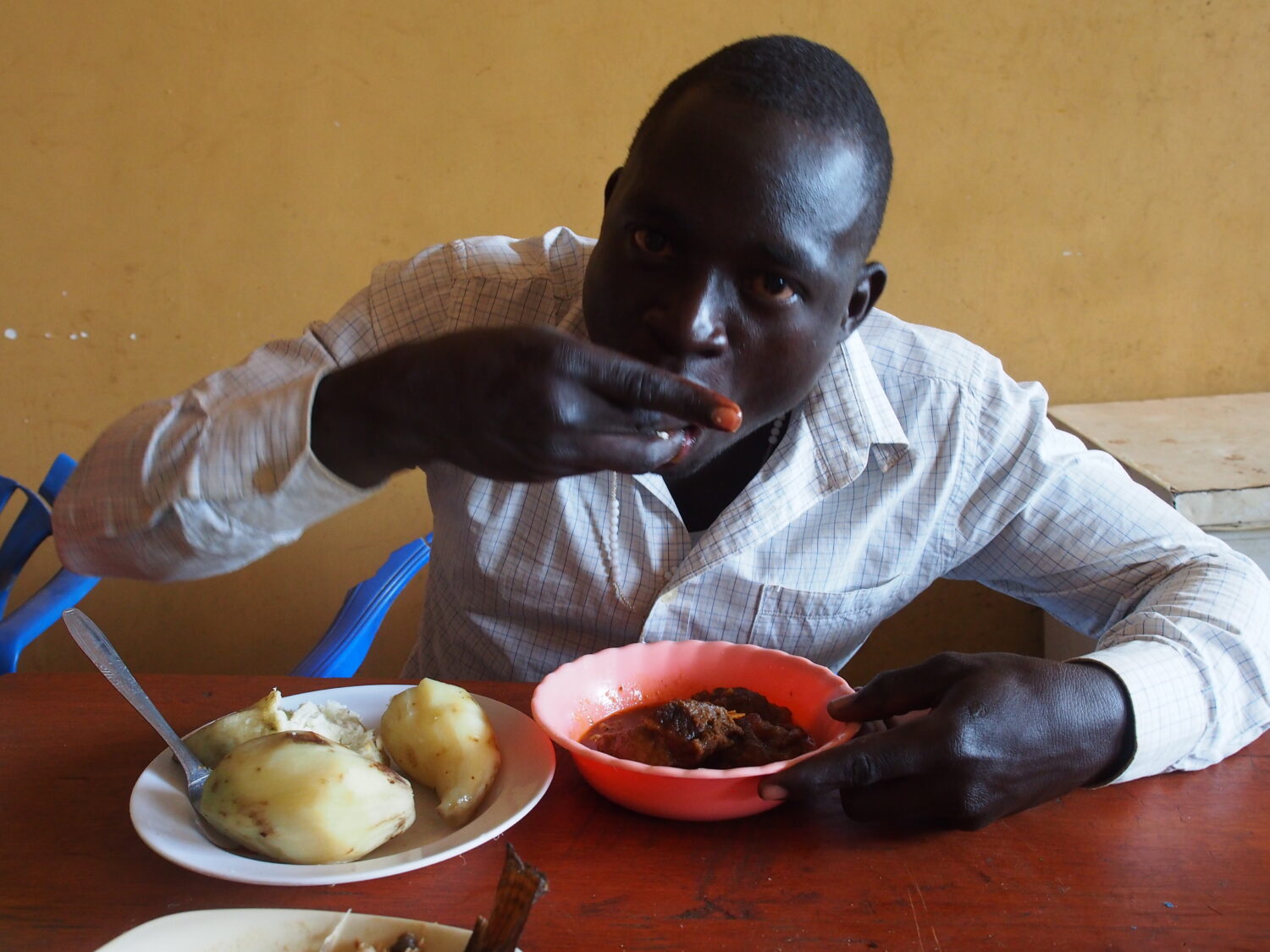
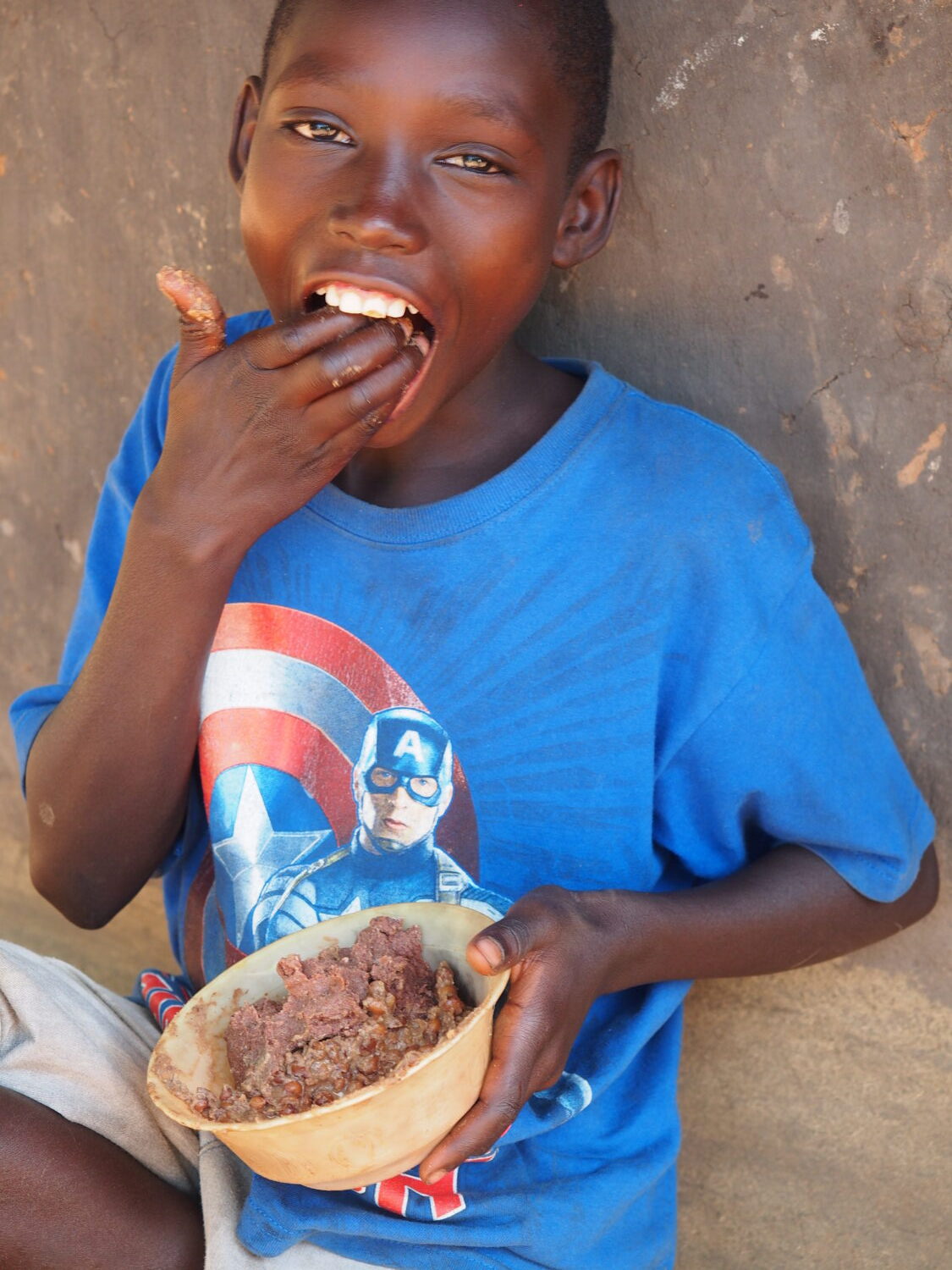
Profile
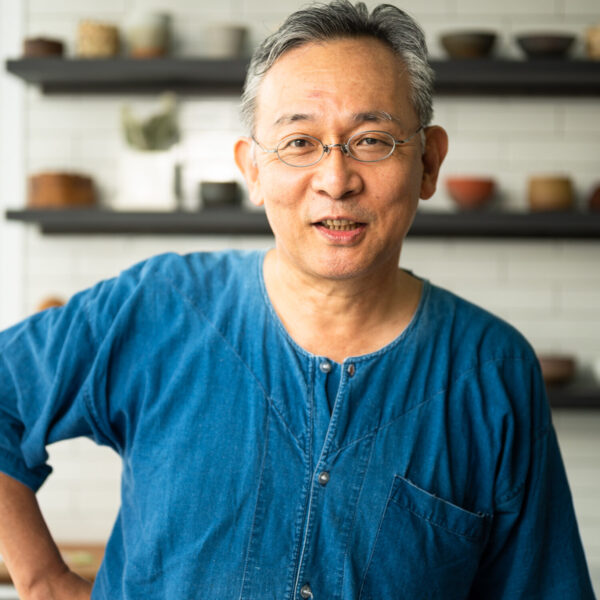
Takashi Mrieda
Born in Minamata City, Kumamoto Prefecture in 1955. As a high school student, met American photographer Eugene Smith and aspired to become a photographer. Graduated from International Christian University (majoring in cultural anthropology). He has covered many places, mainly in Asia, and has developed an interest in food culture. He writes about food culture and the transformation of food culture in various regions. The author of "Curry Rice and the Japanese," "Eating on Erath," "Eating by Hands?," "Animals who cook among many others, " and so on. He teaches courses on food culture at Waseda University and other universities.





Leave a
Comment